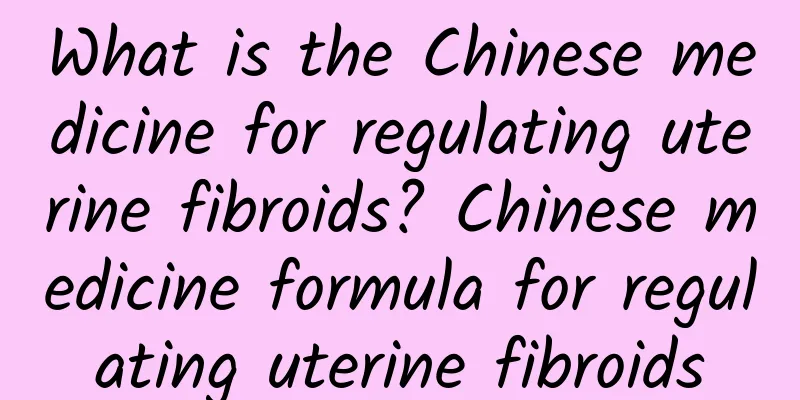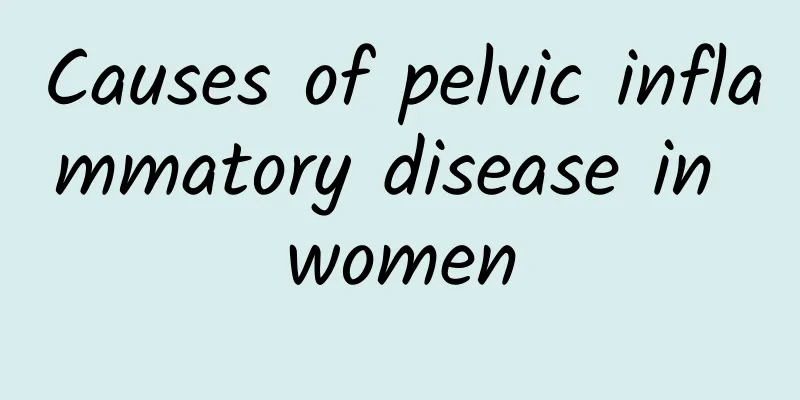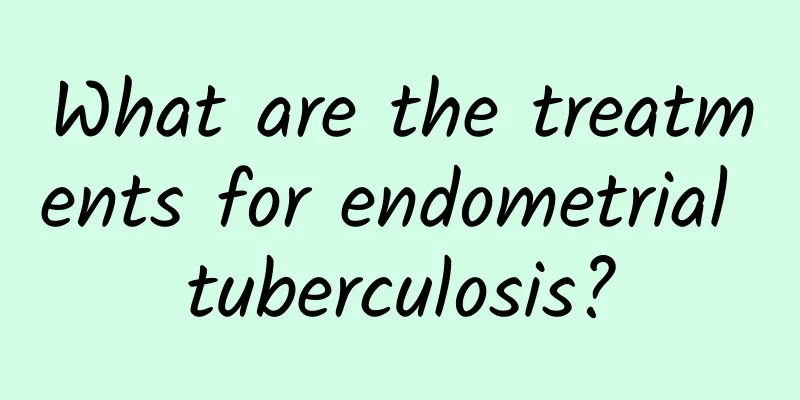What are the clinical manifestations of uterine fibroids? What should I do if I have uterine fibroids?

|
Uterine fibroids are the most common benign tumors in the female reproductive organs and one of the most common tumors in the human body. They are also called fibroids and uterine fibroids. Since uterine fibroids are mainly formed by the proliferation of uterine smooth muscle cells, with a small amount of fibrous connective tissue as a supporting tissue, it is more accurate to call them uterine smooth muscle tumors. They are also called uterine fibroids for short. Two clinical manifestations of uterine fibroids 1. Symptoms Most patients have no symptoms and are only occasionally found during pelvic examination or ultrasound examination. If there are symptoms, they are closely related to the growth site, speed, degeneration and complications of the fibroids, and are relatively less related to the size and number of the fibroids. Patients with multiple subserosal fibroids may have no symptoms, while smaller submucosal fibroids often cause irregular vaginal bleeding or menorrhagia. Common clinical symptoms are: (1) Uterine bleeding is the main symptom of uterine fibroids, which occurs in more than half of patients. Among them, cyclical bleeding is more common, which can be manifested as increased menstruation, prolonged menstruation or shortened menstruation. It can also be manifested as irregular vaginal bleeding during menstruation. Uterine bleeding is common in submucosal fibroids and intramural fibroids, while subserosal fibroids rarely cause uterine bleeding. (2) Abdominal masses and compression symptoms Myomas grow gradually. When the uterus is enlarged for more than 3 months or is a large subserosal myoma located at the bottom of the uterus, the abdominal mass is often more obvious and the bladder is full in the morning. The mass is substantial, movable, and not tender. When myomas grow to a certain size, they can cause symptoms of compression of surrounding organs. Myomas on the anterior wall of the uterus close to the bladder can cause frequent urination and urgency; giant cervical myomas compressing the bladder can cause poor urination or even urinary retention; myomas on the posterior wall of the uterus, especially canyon or posterior lip of the cervix, can compress the rectum, causing poor defecation and discomfort after defecation; giant broad ligament myomas can compress the ureters and even cause hydronephrosis. (3) Pain Generally speaking, uterine fibroids do not cause pain, but many patients may complain of lower abdominal swelling and back pain. Acute abdominal pain may occur when the pedicle of a subserosal fibroid is twisted or when a uterine fibroid undergoes red degeneration. Endometriosis or adenomyosis is also common, and dysmenorrhea may occur. (4) Increased leucorrhea. Increased uterine cavity, increased endometrial glands, and pelvic congestion can increase leucorrhea. When the uterus or cervical submucosal fibroids ulcerate, become infected, or necrotic, bloody or purulent leucorrhea will occur. (5) Infertility and miscarriage Some patients with uterine fibroids are accompanied by infertility or prone to miscarriage. The impact on pregnancy and pregnancy outcomes may be related to the location, size and number of fibroids. Huge uterine fibroids can cause uterine deformation, hindering the implantation of the gestational sac and the growth and development of the embryo; fibroids compressing the fallopian tubes can cause the lumen to be rough; submucosal fibroids can hinder the implantation of the gestational sac or affect the entry of sperm into the uterine cavity. The spontaneous abortion rate of patients with fibroids is higher than that of normal people, about 4:1. (6) Anemia: Long-term menorrhagia or irregular vaginal bleeding can cause hemorrhagic anemia. Patients with submucosal fibroids often suffer from severe anemia. (7) A very small number of patients with uterine fibroids may develop polycythemia and hypoglycemia, which are generally believed to be related to the production of ectopic hormones in the tumor. 2. Physical signs (1) Abdominal examination: If the uterus is enlarged for more than 3 months, the size of the pregnancy or the subserosal fibroids of the uterine fundus is large, a mass may be felt above the pubic symphysis or in the middle of the lower abdomen. If there are multiple uterine fibroids, the mass will be irregular in shape. (2) Pelvic examination Gynecological double diagnosis and triple diagnosis examination, the degree of uterine enlargement is different, irregular, the surface of the uterus is protruding irregularly, solid, and the texture is soft. During gynecological examination, the signs of uterine fibroids vary depending on the type. If the subserosal fibroids are longer, it can touch the solid mass next to the uterus and can move freely. This situation is easily confused with ovarian tumors. Submucosal fibroids descend to the cervical canal and the cervical canal is loose. The examiner's fingers are inserted into the cervix and a smooth spherical tumor can be touched. If it falls off from the outside of the cervical canal, the tumor can be seen, the surface is dark red, and sometimes there is ulceration and necrosis. Larger cervical fibroids can cause the cervix to shift and deform, and the cervix can be flattened or moved up behind the pubic bone. There are five health care methods for uterine fibroids 1. To maintain the health of uterine fibroids, you should eat more vegetables and fruits and less spicy food. 2. Avoid getting pregnant again. Women with uterine fibroids have poor recovery after artificial abortion, which often causes long-term bleeding or chronic genital inflammation. These can also protect uterine fibroids. 3. After being diagnosed with uterine fibroids, you should go to the hospital for regular checkups. If the fibroids grow slowly or not at all, you can have a checkup every six months; if they grow significantly, you should consider surgical treatment to avoid severe bleeding or compression of abdominal organs. The health care of these uterine fibroids is more important. 4. In order to prevent excessive fatigue, you should pay special attention to rest during menstruation. This is also the health care for uterine fibroids. 5. Keep the vulva clean and dry, and wear wide underwear. If there is too much leucorrhea, pay attention to cleaning the vulva at any time. Introduction to the treatment of uterine fibroids 1. Surgical treatment of uterine fibroids 1. Hysterectomy is suitable for hysterectomy > 3 months of gestational uterine size, although the fibroids are not large, but the symptoms are obvious, or the growth of fibroids cannot rule out malignancy; 2. Myoma removal: Suitable for patients under 35 years old, unmarried or childless; 2. Drug treatment of uterine fibroids This method is mainly suitable for patients with small fibroids, few symptoms, near menopause or whose systemic conditions cannot tolerate uterine fibroid surgery. 1. Methyltestosterone, testosterone propionate; 2. Progesterone. ① For patients who need to have children; ② Choose medroxyprogesterone, megestrol acetate, norethisterone, etc.; ③ Luteinizing hormone-releasing hormone analogs. |
<<: What should I do if I have uterine fibroids? What should I eat if I have uterine fibroids?
Recommend
What harm does uterine fluid cause to women?
The uterus is a female reproductive organ. If it ...
I have my period for ten days and there is always brown discharge when I wipe it
It can be worrisome if your period has lasted ten...
What medicine is good for treating endometriosis?
Endometriosis can be treated with drugs to shrink...
[Video version] Dementia, aging...the brain is playing tricks! 6 essential nutrients for brain protection
The silver hair wave is unstoppable! The elderly ...
How to care for ectopic pregnancy bleeding?
Ectopic pregnancy is what we call ectopic pregnan...
What are the treatment guidelines for uterine fibroids?
What are the treatment guidelines for uterine fib...
Say goodbye to male beer belly: inject testosterone to lose weight
Many men develop beer bellies as they age due to ...
Can women with cervical erosion eat spicy food? 4 dietary suggestions for women with cervical erosion
In addition to paying attention to daily treatmen...
Will ovarian cysts affect conception?
Will ovarian cysts affect conception? Whether ova...
What are the methods to cure dysmenorrhea?
What are the methods to cure dysmenorrhea? Many w...
When is the best time to perform uterine fibroid surgery? Who are the high-risk groups for uterine fibroids?
Uterine fibroids have a high incidence rate in wo...
Treatment of incomplete abortion
Because the endocrine levels of various systems i...
Can I eat cilantro after a miscarriage? Or should I not eat it?
Abortion is very harmful to women's health, w...
80-year-old grandmother paralyzed by back-bending exercise sues famous doctor
Another medical dispute in the weight loss field ...
Do you know how to prevent cervicitis?
What should we pay attention to in preventing cer...









